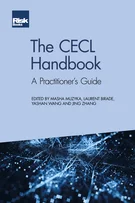Portfolio credit risk models
Greg M Gupton
Portfolio credit risk models
Introduction
Credit derivatives: the past, the present and the future
The determinants of credit spread returns
What’s driving the default swap basis?
What is the value of modified restructuring?
The debt and equity linkage and the valuation of credit derivatives
Nth to default swaps and notes: all about default correlation
Portfolio credit risk models
Credit derivatives as an efficient way of transitioning to optimal portfolios
Overview of the CDO market
Synthetic securitisation and structured portfolio credit derivatives
Integrating credit derivatives and securitisation technology: the collateralised synthetic obligation
Considerations for dynamic and static, cash and synthetic collateralised debt obligations
CDOs of CDOs: art eating itself?
Valuation and risk analysis of synthetic collateralised debt obligations: a copula function approach
Extreme events and multi-name credit derivatives
Reduced-form models: curve construction and the pricing of credit swaps, options and hybrids
Dynamite dynamics
Modelling and hedging of default risk
ISDA’s role in the credit derivatives marketplace
Credit linked notes
Using guarantees and credit derivatives to reduce credit risk capital requirements under the New Basel Capital Accord
There are several portfolio-level methodologies for estimating a portfolio’s CreditVAR (value-at-risk due to credit quality changes). The natural question is, “which framework is best?” In a very significant way, this is driven by the data that are available. If the best data for evaluating credit quality are categorical credit ratings (either from credit rating agencies or a bank’s own internal ratings), then the best models of credit risk will use these as input, likely apply Markov analysis, and end up looking like CreditMetrics or CreditPortfolioView. If the best (most timely and impartial) credit quality inferences can be extracted from equity prices, then the best models will use these, probably apply a Merton-type structural approach and end up looking like PortfolioManager. If better credit judgements are from default histories, then perhaps an actuarial model such as CreditRisk+ will dominate.
Similarly, the selection and application of available models is best made after first considering what data are available for user input. An analyst may deeply believe that, say, credit spreads contain the best credit-quality information. Nevertheless, if spreads for his particular
Copyright Infopro Digital Limited. All rights reserved.
You may share this content using our article tools. Printing this content is for the sole use of the Authorised User (named subscriber), as outlined in our terms and conditions - https://www.infopro-insight.com/terms-conditions/insight-subscriptions/
If you would like to purchase additional rights please email info@risk.net
Copyright Infopro Digital Limited. All rights reserved.
You may share this content using our article tools. Copying this content is for the sole use of the Authorised User (named subscriber), as outlined in our terms and conditions - https://www.infopro-insight.com/terms-conditions/insight-subscriptions/
If you would like to purchase additional rights please email info@risk.net






